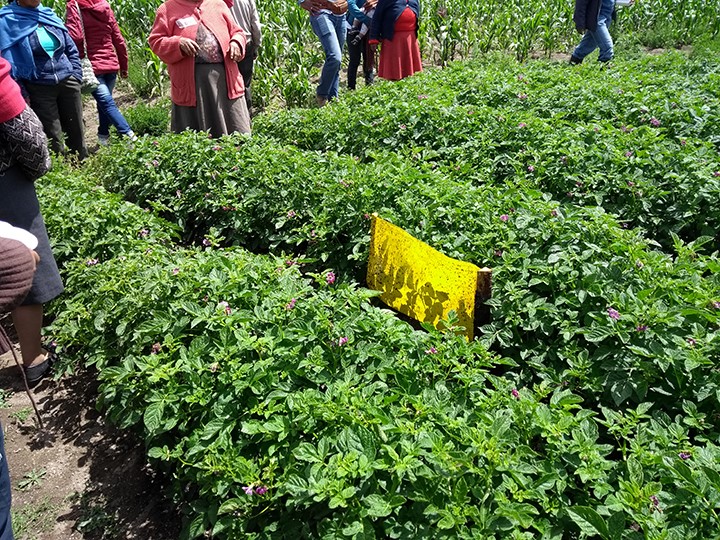
Lupin IPM
Lead Organization:
Institut de Recherche pour le Developpement
Partner Organizations:
Universidad Tecnica Cotopaxi (UTC), ESPOCH, PUCE,
Community of Practice:
Countries:
Ecuador
Duration:
11/2016—11/2019
Overview:
An important question in the field of pest management is how the features of agricultural landscapes (agroscapes) influence biological control services to small-scale farmers. Agricultural intensification is thought to disrupt the ability of ecosystems to provide pest control services, yet inconsistent results have been reported. One of the main hypotheses is that pesticide use and/or reductions in plant diversity depress populations of natural enemies. This hypothesis has been extensively tested but seldom examined across temporal or spatial scales relevant to changes in pest and antagonist status associated with agricultural intensification. The project team will test this hypothesis with the study of lupin pests and their antagonists (predators and parasitoids) in Ecuador and Bolivia.
Lupin is an important and under-researched native legume in the high Andean agriculture system. The purpose of this project is to improve the management of lupin pests, thereby reducing the use of pesticides on this important native legume. The project will accomplish this using a novel mix of basic, applied, observational, and experimental research that looks at both biophysical and socioeconomic factors. This will allow for quicker and possibly more robust learning cycles than moving sequentially through research processes. Specifically, the project will examine the effect on pest biocontrol of crop habitat management by farmer communities (as individuals or groups) at various scales (within the field, among neighboring fields, and at a larger landscape scale).
To achieve this goal, the project team will first acquire basic knowledge of the biology and population dynamics of lupin pests (e.g., Delia platura) and test biocontrol strategies based on weed and associated crop management at a local scale. Preliminary data from the National Agriculture Research program of Ecuador (INIAP) and the Polytechnic University of Chimborazo (ESPOCH) suggests that associated weeds and crops (such as broccoli) may influence pest infestation in lupin fields. Secondly, the team will test whether agroscape intensification and pesticide use modulate lupin pest abundance, damage, and biocontrol by antagonists through a combination of large-scale observatory and experimental studies. Lastly, the project will document lupin growers’ socioeconomic strategies, investigate their perception of pest control issues, and assess how farmer organizations within the agroscape may influence the control or outbreak of pests.
Grant Aims:
- Generate new knowledge about lupin pests.
- Develop a basis for development of pest control practices, which will improve knowledge of insect ecology at a broader scale.
- Develop an online database on pest knowledge and identification.
- Map and analyze the effect of landscape complexity and structure on pests.
- Explore scenarios/logistics at the landscape level to enhance beneficial agroscape structure and composition.
- Develop maps of each lupin crop parcel and their surroundings, as well as spatially and temporally explicit models to see the evolution of the landscape composition and structure in space and time, together with associated metrics (basis for landscape ecology and integrated pest management or IPM).
- Design and execute farmer-centered research.
- Understand socioeconomic factors surrounding IPM feasibility for each region, and which factors are decisive for their adoption, as well as determinants of collective actions and coordination in pest control.
- Develop scenarios and propositions of landscape structure and composition that limit the outbreak of pests while considering farmers’ constraints so that recommendations will be effective at the landscape/community level.
- Lower the use of agrochemicals while controlling pest populations to reach a sustainable level of lupin crop production for the participating farmers.
- Contribute to the scientific dialogue.
- Publish article(s) in an international peer-reviewed journal.
- Propose new tools (e.g., role-playing games) to encourage productive discussion between farmers and stakeholders.
- Create a crowd-sourcing mobile app to allow an adaptive assessment of newly developed control practices.